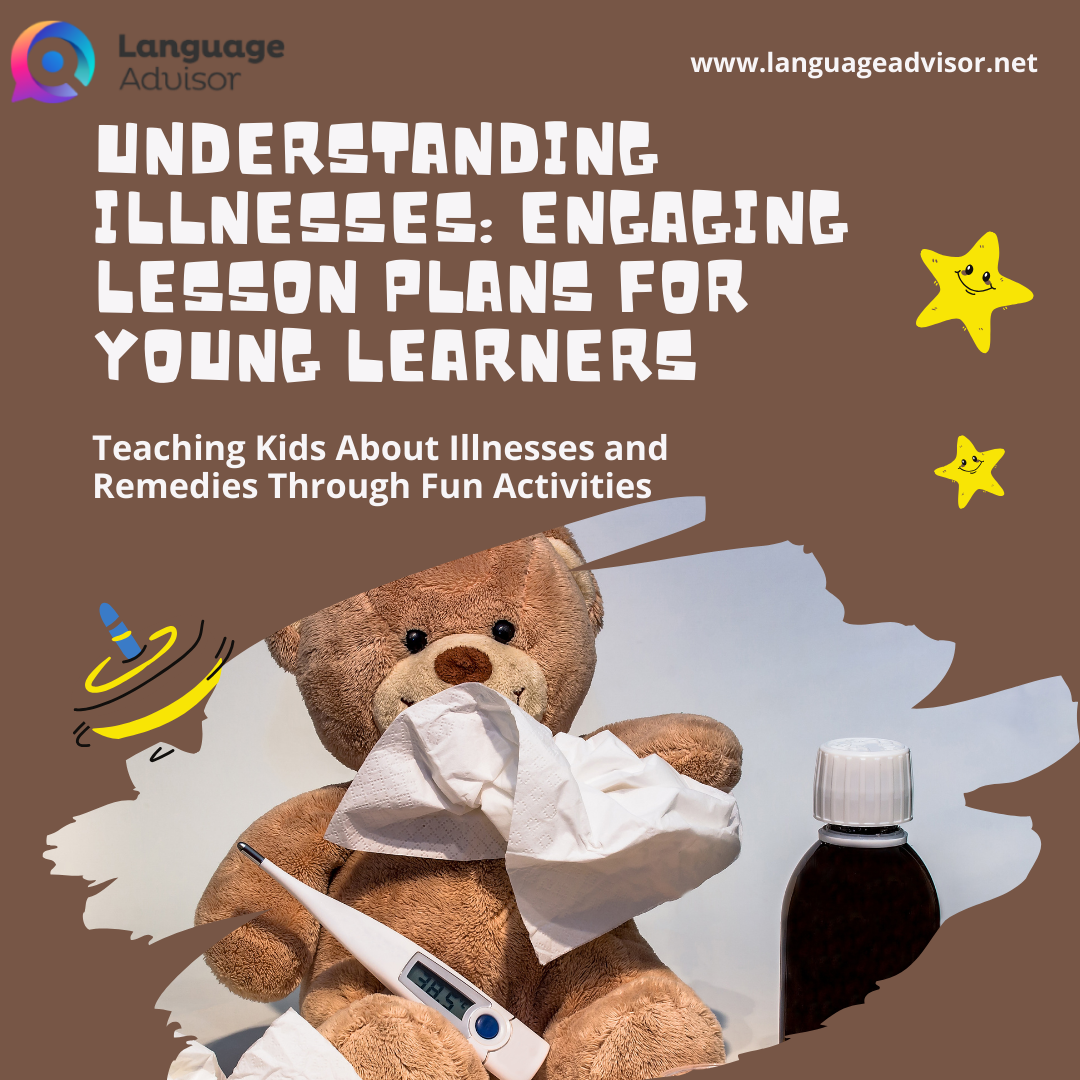Understanding Illnesses: Engaging Lesson Plans for Young Learners. Teaching Kids About Illnesses and Remedies Through Fun Activities
Understanding Illnesses

Understanding Illnesses
Teaching young learners about common illnesses and appropriate remedies can be both educational and entertaining. This lesson plan introduces students to vocabulary related to health complaints and provides opportunities for them to practice role-playing scenarios. With interactive activities and engaging exercises, students will learn essential vocabulary and understand how to address common health issues.
Lesson One: Learning About Illnesses
Warm-Up Activity: Body Outline Race
- Preparation: Draw two outlines of bodies on the board with their respective labels beside them. Ensure each body outline is identical.
- Game Setup: Divide the class into two teams. Each team takes turns labeling a body part on one of the outlines. Once a student labels an item, they pass the pen to a teammate, who labels the next part.
- Winning: The first team to correctly label all body parts wins. Use the “Head, Shoulders, Knees, and Toes” song to help with identifying the parts.
Additional Warm-Up: Simon Says
- Game Setup: Play Simon Says with the class to practice body parts. For example, “Simon says touch your feet.” If a student makes a mistake, they must sit down. The team with the most students standing at the end wins.
Presentation (10 minutes)
Introduce and write the following illness vocabulary on the board:
- Headache
- Toothache
- Stomach ache
- Earache
- Sore throat
- Fever
- Sneezing
- Coughing
- Shivering
- Patient
- Doctor
Students should copy these words into their notebooks in both English and Thai.
Practice (15 minutes)
- Class Practice: Review the vocabulary and practice dialogues as a class:
- Receptionist: “Hello, please take a seat and wait for your number to be called.”
- Patient: “Thank you. What is my number, please?”
- Receptionist: “Your number is 358. There is a ten-minute wait today.”
- Patient: “Okay, thank you very much.”
- Doctor: “What is the matter with you?”
- Patient: “Doctor, I do not feel very well.”
- Doctor: “Why? What is wrong with you?”
- Patient: “I have a/an _________ / I am ________.”
- Pair Practice: Have students practice the dialogues in pairs, switching roles as patient and doctor. Note: The receptionist and doctor roles will be played by the same student.
Production (15 minutes)
- Alphabet Game: Split the class into two teams. Call out a letter of the alphabet using its phonetic sound. Students must think of an illness or complaint starting with that letter and raise their hands. Correct answers earn points for their team.
- Discussion: In pairs, students discuss what makes them feel better when they are unwell. For example, “I like to lie in bed and eat soup.”
Cooler (5 minutes)
Acting Out: Erase the words from the board and act out different illnesses. Students must shout out the illness being acted out. Award points for correct answers and allow students to act out illnesses as well.

Lesson Two: Remedies for Illnesses
Warm-Up Activity: Spelling Race
- Game Setup: Show flashcards with vocabulary from the previous lesson. Two students from each team race to spell the word correctly on the board.
- Winning: The first team to spell the word correctly earns a point. Classmates can assist by shouting out spelling from their notebooks.
Presentation (10 minutes)
- Introduce Remedies: Use flashcards from the previous lesson and match them with appropriate remedies. For example:
- Headache → Drink more water
- Toothache → Go to the dentist
- Stomach ache → Have a hot water bottle
- Earache → Don’t put your finger in your ear
- Sore throat → Have some medicine
- Fever → Have an ice pack
- Sneezing → Have some tissues
- Coughing → Use your hand to cover your mouth
- Shivering → Have a blanket
- Student Activity: Students copy the new vocabulary into their books in English and Thai. They should match each illness with its remedy.
Practice (15 minutes)
- Role Play: Revisit the role-play activity with an emphasis on providing remedies. For example:
- Patient: “I have a headache.”
- Doctor: “I’m sorry to hear that. I think you should drink more water.”
- Pair Practice: Students practice the role play in pairs. Allow 10 minutes for practice, then select pairs to perform their role plays in front of the class.
Cooler (5 minutes)
Role Play Performance: Students act out the role play scenarios in front of the class, using actions to make their performance as realistic as possible.

Conclusion
These lesson plans for teaching about illnesses and remedies offer an engaging way for young learners to understand health-related vocabulary and practice practical language skills.
Through interactive activities, role plays, and creative exercises, students will not only learn essential vocabulary but also gain confidence in using it effectively.

Also check out these lesson plans












